|
Books Should Be Free Loyal Books Free Public Domain Audiobooks & eBook Downloads |
|
|
Books Should Be Free Loyal Books Free Public Domain Audiobooks & eBook Downloads |
|
Adventure Books |
|---|
|
Book type:
Sort by:
View by:
|
By: Robert Michael Ballantyne (1825-1894) | |
|---|---|
 Fast in the Ice
Fast in the Ice
At the age of 16 Ballantyne went to Canada and was six years in the service of the Hudson’s Bay Company. His rule in writing, being in every case, was to write as far as possible from personal knowledge of the scenes he described. In this book he details the lives of the crew as they must overwinter in the frozen north including their meetings with Eskimos and bears and their struggles with disease. This is a realistic account of what life was like for the explorers of the Arctic. | |
 The Madman And The Pirate
The Madman And The Pirate
R. M. Ballantyne (April 24, 1825 – February 8, 1894) was a Scottish juvenile fiction writer. Born Robert Michael Ballantyne in Edinburgh, he was part of a famous family of printers and publishers. At the age of 16 he went to Canada and was six years in the service of the Hudson’s Bay Company. He returned to Scotland in 1847, and published his first book the following year, Hudson’s Bay: or, Life in the Wilds of North America. For some time he was employed by Messrs Constable, the publishers, but in 1856 he gave up business for the profession of literature, and began the series of adventure stories for the young with which his name is popularly associated. | |
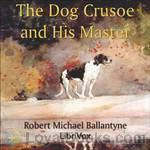 The Dog Crusoe and His Master
The Dog Crusoe and His Master
This is a story of an adventure involving a young man, his dog, and two friends. Together they wander through the Western prairies on a mission to make peace between the “pale-faces” and the “Red men”. They face many perils and become heroes many times over. This wonderful story takes the characters (and the reader) on an action-packed journey through the Western prairies during the times when relations between the white man and the Natives were not always peaceful. | |
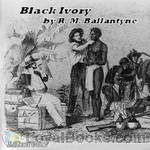 Black Ivory
Black Ivory
Although the book's title Black Ivory denotes dealing in the slave trade it is not our heroes who are doing it. At the very first chapter there is a shipwreck, which leaves the son of the charterer of the sinking ship, and a seaman friend of his, alone on the east coast of Africa, where Arab and Portuguese slave traders were still carrying out their evil trade, despite the great efforts of patrolling British warships to limit it and free the unfortunates whom they found being carried away in the Arab dhows... | |
 My Doggie and I
My Doggie and I
This story surrounds a child waif, a young woman, a young gentleman doctor, and an elderly lady. This tale unfolds the story of a bond that brings these unlikely friends together and merges their separate paths of life into one common path. The bond is "Dumps", or "Pompey", the "doggie". With many twists, turns, and uncertainties, the ending may surprise the reader. All's well that ends well in this doggie "tail". (Introduction by Allyson Hester) | |
 The Pirate City An Algerine Tale
The Pirate City An Algerine Tale
| |
 Gorilla Hunters
Gorilla Hunters
Ralph Rover is happily at home from his adventure on The Coral Island and wondering if he should settle down when he receives a visit from an eccentric stranger that won't give his name. This visit starts him on a string of adventures that find him getting charged by rhinoceroses, chased by African natives, and facing down a larger-than-life gorilla on his own. Of course, this is only the start of his adventure in to the land of the gorillas. Please note: this book has some words now considered derogatory, which are used in a generic way without any derogatory meaning... | |
 The Big Otter
The Big Otter
| |
 The World of Ice
The World of Ice
| |
 The Norsemen in the West
The Norsemen in the West
| |
 The Battery and the Boiler Adventures in Laying of Submarine Electric Cables
The Battery and the Boiler Adventures in Laying of Submarine Electric Cables
| |
 The Rover of the Andes A Tale of Adventure on South America
The Rover of the Andes A Tale of Adventure on South America
| |
 The Golden Dream Adventures in the Far West
The Golden Dream Adventures in the Far West
| |
 The Middy and the Moors An Algerine Story
The Middy and the Moors An Algerine Story
| |
 Ungava
Ungava
| |
 Gascoyne, The Sandal-Wood Trader A Tale of the Pacific
Gascoyne, The Sandal-Wood Trader A Tale of the Pacific
| |
 The Red Eric
The Red Eric
| |
 The Fugitives The Tyrant Queen of Madagascar
The Fugitives The Tyrant Queen of Madagascar
| |
 The Eagle Cliff
The Eagle Cliff
| |
 The Giant of the North Pokings Round the Pole
The Giant of the North Pokings Round the Pole
| |
 In the Track of the Troops
In the Track of the Troops
| |
 Blue Lights Hot Work in the Soudan
Blue Lights Hot Work in the Soudan
| |
 Charlie to the Rescue
Charlie to the Rescue
Charlie Brooke is always rescuing others, and sometimes even himself! His latest rescue, though, could turn out to be fatal... | |
 Lost in the Forest Wandering Will's Adventures in South America
Lost in the Forest Wandering Will's Adventures in South America
| |
 Gascoyne, the Sandal-Wood Trader
Gascoyne, the Sandal-Wood Trader
| |
 Hunting the Lions
Hunting the Lions
| |
 Island Queen
Island Queen
The story of Dominic, Otto and Pauline Rigonda, three siblings who are blown onto an island after being shipwrecked, and are later joined by the immigrant passengers and crew of a ship that is wrecked on the same island. When the question of government comes up, the little colony chooses a queen, and they work on improving the island for some time, despite internal dissensions, and an attack by savages. But eventually the colony encounters natural forces it cannot resist, and the queen and her family return to England, hopefully to live "happily ever after". | |
 Fighting the Whales
Fighting the Whales
| |
 The Settler and the Savage
The Settler and the Savage
| |
 Red Rooney The Last of the Crew
Red Rooney The Last of the Crew
| |
 Jarwin and Cuffy
Jarwin and Cuffy
Jarwin is an English sailor who has been shipwrecked. He is stranded on a raft with only his dog Cuffy, and land is nowhere in sight. Their food and water is running out. What can Jarwin do to save his dog's (and his own) life? | |
 The Hot Swamp
The Hot Swamp
| |
 Erling the Bold
Erling the Bold
| |
 Chasing the Sun
Chasing the Sun
| |
 Blown to Bits The Lonely Man of Rakata, the Malay Archipelago
Blown to Bits The Lonely Man of Rakata, the Malay Archipelago
| |
 The World of Ice
The World of Ice
| |
 Hunted and Harried
Hunted and Harried
| |
 The Battle and the Breeze
The Battle and the Breeze
| |
 Martin Rattler
Martin Rattler
| |
 Sunk at Sea
Sunk at Sea
| |
 Martin Rattler
Martin Rattler
| |
 Fighting the Whales
Fighting the Whales
| |
 Twice Bought
Twice Bought
This story is set in the gold fields of Oregon, where Tom Brixton, and his best friend, Fred Westly, are digging gold to try to “make their pile”. Before leaving England, the steady and God-fearing Fred had promised Tom's mother that he would do his best to take care of his friend, but in spite of all his efforts, Tom had fallen in with bad companions and taken to gambling. He was convinced that he could make his fortune quicker by attempting to increase it at the dice or card table, and all his friend's attempts to make him see his errors were unavailing... | |
 The Wild Man of the West A Tale of the Rocky Mountains
The Wild Man of the West A Tale of the Rocky Mountains
| |
By: Robert Moore Williams (1907-1977) | |
|---|---|
 New Lamps
New Lamps
Ronson came to the Red Planet on the strangest mission of all ... he only knew he wanted to see Les Ro, but he didn't know exactly why. It was because he knew that Les Ro had the answer to something that had never been answered before, if indeed, it had ever been asked! For Les Ro traded new lamps for old—and they were the lamps of life itself! A story of what life holds for all of us. - Summary by Author | |
By: Robert Sidney Bowen (1900-1977) | |
|---|---|
 Dave Dawson on Guadalcanal
Dave Dawson on Guadalcanal
One of a series of youth-oriented adventure books set in contemporary WWII era, featuring fictional American flying ace, Dave Dawson. | |
By: Robert W. Chambers (1865-1933) | |
|---|---|
 The Flaming Jewel
The Flaming Jewel
| |
By: Robert W. Service (1874-1958) | |
|---|---|
 Selections from Ballads of a Cheechako
Selections from Ballads of a Cheechako
These twelve poems are from Ballads of a Cheechako which was Robert W. Service’s third book of Yukon poems, published in 1909. The word Cheechako, from Chinook Jargon, originated in the United States (Alaska) and Canada (Yukon) and was imported into local English during the Yukon gold rush that began in 1896. Cheechako, is a non derogatory word meaning “newcomer” or “tenderfoot.” The derivation looks something like this: chee new cha come ko home. | |
 Ottawa Folk Festival Robert Service Collection
Ottawa Folk Festival Robert Service Collection
The Spell of the Yukon by Robert Service with patrons, musicians and organizers. Robert Service is an iconic Canadian poet. | |
By: Rolf Boldrewood (1826-1915) | |
|---|---|
 Robbery Under Arms
Robbery Under Arms
A tale of cattle duffing, horse stealing and bushranging in the New South Wales outback with Captain Starlight.To quote the author "though presented in the guise of fiction, this chronicle of the Marston family must not be set down by the reader as wholly fanciful or exaggerated. Much of the narrative is literally true, as can be verified by official records. A lifelong residence in Australia may be accepted as a guarantee for fidelity as to local colour and descriptive detail." | |
 Plain Living
Plain Living
Seemingly down-on-his-luck Australian sheep rancher and orchard grower kindly teaches his loving family the value of money through 'plain living'. Fellow fans of Jon Cleary's "The Sundowners", set a generation later, may enjoy this. - Summary by Matt Pierard | |
By: Roy J. Snell (1878-1959) | |
|---|---|
 The Blue Envelope
The Blue Envelope
A mystery and adventure story for girls set in Alaska. | |
By: Roy Rockwood | |
|---|---|
 Dave Dashaway and His Hydroplane
Dave Dashaway and His Hydroplane
Never was there a more clever young aviator than Dave Dashaway. All up-to-date lads will surely wish to read about him. This second volume of the series shows how Dave continued his career as a birdman and had many adventures over the Great Lakes, and how he foiled the plans of some Canadian smugglers. (From the 1913 edition) | |
 The Wizard of the Sea A Trip Under the Ocean
The Wizard of the Sea A Trip Under the Ocean
| |
 Dave Dashaway Around the World
Dave Dashaway Around the World
Never was there a more clever young aviator than Dave Dashaway, and all up-to-date lads will wish to make his acquaintance.Weldon J. Cobb was a staff writer for the Stratemeyer Syndicate, a book packaging company that specialized in juvenile fiction. Under the pseudonym Roy Rockwood, Cobb authored the Dave Dashaway series of books that appeared between the years 1913 and 1915.In this fourth volume of the series, Dave Dashaway Around the World; Or, A Young Yankee Aviator Among Many Nations, Cobb enthralls his audience with the absorbing tale of a great air flight around the world, of adventures in Alaska, Siberia and elsewhere... | |
By: Rudyard Kipling (1865-1936) | |
|---|---|
 Kim
Kim
Present day readers live in a world that's emerged from the Cold War and the endless rivalry of the Super Powers but this book goes back and traces the origins of the conflict and mutual antagonism between nations. Kim by Rudyard Kipling is set against the background of the Great Game as it was called the tug-of-war between Britain and Russia for the control of Central Asia. The novel's action takes place during the Anglo-Afghan Wars of 1839-42. The novel's sweeping narrative, the depth of character and the sheer historical scale make it a first rate story... | |
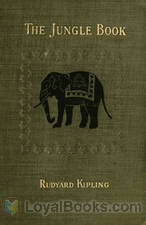 The Jungle Book
The Jungle Book
Originally written for his young daughter Josephine, who died tragically aged six, The Jungle Book by Rudyard Kipling is a collection of short stories which were published separately in magazines before being compiled into a book. The stories are in the form of fables, where animals communicate and speak to each other as humans do and the purpose of each story was to convey a moral or message to the reader. Modern readers would be more familiar with the Disney animated version in which Mowgli the little “man-cub” is raised by wolves... | |
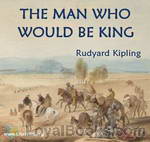 The Man Who Would Be King
The Man Who Would Be King
The Man Who Would Be King tells the story of two British adventurers in British India who become kings of Kafiristan, a remote part of Afghanistan. It was inspired by the exploits of James Brooke, an Englishman who became the “white Raja” of Sarawak in Borneo, and by the travels of American adventurer Josiah Harlan, who claimed the title Prince of Ghor. The story was first published in The Phantom Rickshaw and other Tales (Volume Five of the Indian Railway Library, published by A H Wheeler & Co of Allahabad in 1888)... | |
 Puck of Pook's Hill
Puck of Pook's Hill
Puck of Pook’s Hill is a children’s book by Rudyard Kipling, published in 1906, containing a series of short stories set in different periods of history. The stories are all told to two children living near Pevensey by people magically plucked out of history by Puck. | |
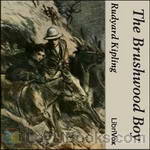 The Brushwood Boy
The Brushwood Boy
The experiences in public school, Sandhurst and military life in India of Major George Cottar together with his adventures in the dream world he discovers and frequents. | |
By: Ruth Plumly Thompson (1891-1976) | |
|---|---|
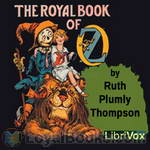 The Royal Book of Oz
The Royal Book of Oz
The Royal Book of Oz (1921) is the fifteenth in the series of Oz books, and the first to be written by Ruth Plumly Thompson after L. Frank Baum’s death. Although Baum was credited as the author, it was written entirely by Thompson. The Scarecrow is upset when Professor Wogglebug tells him that he has no family, so he goes to where Dorothy Gale found him to trace his “roots.” Then he vanishes from the face of Oz. Dorothy and the Cowardly Lion mount a search for their friend, but when that is successful, they will need to become a rescue party! | |
By: S. R. Crockett (1859-1914) | |
|---|---|
 Grey Man
Grey Man
This novel is set in Scotland in turbulent times, and we are immediately introduced to intrigue and family strife. At Launcelot Kennedy's aunt's husband's funeral, he and his father are first hidden, then hustled away secretly for fear of being spies. Werewolves, murder, secret trysts, vengeance and siege are the backdrop to this tale as Kennedy is set against Kennedy in this chilling feud. | |
By: Samuel B. Allison | |
|---|---|
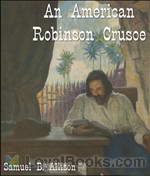 An American Robinson Crusoe
An American Robinson Crusoe
An American Robinson Crusoe is a short version of the original story. An indolent, rebellious teen goes on a marine voyage against his parents’ wishes. The ship (and all of its crew) is lost in a storm, but Robinson makes it to a deserted island. He has no tools, no weapons, but he lives for over 28 years on the island. He befriends many animals on the island and after over 20 years living solo, he is joined by a young “savage” who becomes his constant companion. The transformation from the young, lazy teen to a self-sustaining, incredibly knowledgeable adult is one of the major themes in the story. | |
By: Samuel Johnson (1709-1784) | |
|---|---|
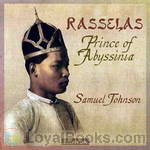 Rasselas, Prince of Abyssinia
Rasselas, Prince of Abyssinia
In this enchanting fable (subtitled The Choice of Life), Rasselas and his retinue burrow their way out of the totalitarian paradise of the Happy Valley in search of that triad of eighteenth-century aspiration – life, liberty and happiness.According to that quirky authority, James Boswell, Johnson penned his only work of prose fiction in a handful of days to cover the cost of his mother’s funeral. The stylistic elegance of the book and its wide-ranging philosophical concerns give no hint of haste or superficiality... | |
By: Samuel Merwin | |
|---|---|
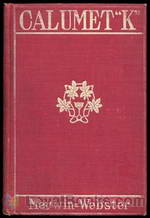 Calumet "K"
Calumet "K"
"A novel, with several elements of rather unusual interest. As a tale, it is swift, simple, and absorbing, and one does not willingly put it down until it is finished. It has to do with grain-elevator business, with railways, strikes, and commercial and financial matters generally, woven skilfully into a human story of love." --The Commercial Advertiser "'Calumet "K"' is a novel that is exciting and absorbing, but not the least bit sensational. It is the story of a rush.... The book is an unusually good story; one that shows the inner workings of the labor union, and portrays men who are the bone and sinew of the earth... | |
By: Sarah Tytler (1827-1914) | |
|---|---|
 Girlhood and Womanhood The Story of some Fortunes and Misfortunes
Girlhood and Womanhood The Story of some Fortunes and Misfortunes
| |
By: Sax Rohmer (1883-1959) | |
|---|---|
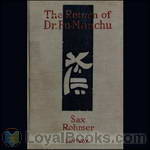 The Return of Dr. Fu-Manchu
The Return of Dr. Fu-Manchu
Burmese Commisioner Nayland Smith and his faithful friend Dr Petrie continue their fight against the evil genius of Dr Fu-Manchu when they seek to save the good doctor’s lost love and protect the British Empire from disaster when their malignant enemy returns to England. | |
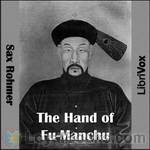 The Hand of Fu-Manchu
The Hand of Fu-Manchu
Further adventures of Nayland Smith and Doctor Petrie as they continue their battles against the evil genius, Dr Fu-Manchu. | |
 The Insidious Dr. Fu-Manchu
The Insidious Dr. Fu-Manchu
The first of the Fu-Manchu novels this story follows the two characters who are set against the machinations of the insidious doctor. | |
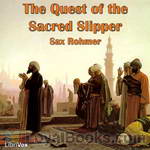 The Quest of the Sacred Slipper
The Quest of the Sacred Slipper
Cavanagh becomes involved in the adventurous search for a precious relic in the mysterious East. (Introduction by Laineyben) | |
By: Sewell Peaslee Wright (1897-1970) | |
|---|---|
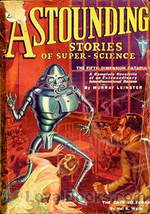 Astounding Stories 13, January 1931
Astounding Stories 13, January 1931
This issue contains "The Dark Side of Antri" by Sewell Peaslea Wright, "The Sunken Empire" by H. Thompson Rich, "The Gate to Xoran" by Hal K. Wells, "The Eye of Allah" by C. D. Willard, "The Fifth-Dimension Catapult" by Murray Leinster, and "The Pirate Planet[' by Charles W. Diffin. | |
By: Sidford Frederick Hamp (1855-1919) | |
|---|---|
 Coco Bolo: King of the Floating Island
Coco Bolo: King of the Floating Island
Sisters Margaret and Frances wait for their younger brother Edward to go for a nap before embarking on the adventure of trying to stand on the heads of their shadows. Daddy sees them and encourages them to chase further adventures of childhood, little suspecting where they will take them. - Summary by Lynne Thompson | |
By: Sinclair Lewis (1885-1951) | |
|---|---|
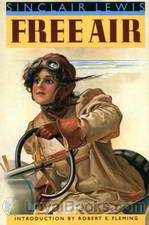 Free Air
Free Air
This road trip novel is set in the early twentieth century and follows the experiences of an aristocratic New Englander and her father as they travel by automobile from Minneapolis to Seattle. She is wooed and won by a noble but simple commoner she meets along the way. Lewis is at his usual wryly humorous self, poking fun at the upper class and treating the common people only slightly better. | |
By: Sir Arthur Conan Doyle (1859-1930) | |
|---|---|
 The Return of Sherlock Holmes
The Return of Sherlock Holmes
A young gambler is found shot dead in a closed room. Dr. Watson, who still mourns the disappearance of his famous friend is intrigued enough to step out of his house and take a look at the crime scene. A crowd has gathered there, curiously gazing up at the room where the crime is supposed to have taken place. Watson inadvertently jostles against an elderly, deformed man and knocks a stack of books from the fellow's hand. The man curses Watson vilely and disappears into the throng. It suddenly occurs to Watson that one of the books that he had helped the stranger pick up had seemed familiar... | |
 The Memoirs of Sherlock Holmes
The Memoirs of Sherlock Holmes
For more than a century and a quarter, fans of detective fiction have enjoyed the doings of the iconic sleuth, Mr. Sherlock Holmes. In the company of his faithful companion, Dr Watson, Holmes has consistently delighted generations of readers. Created by a Scottish writer and physician, Sir Arthur Conan Doyle, this immortal private eye has solved cases for kings and commoners, lovely damsels and little old ladies, engineers and country squires and a legion of others who come to him in distress and perplexity... | |
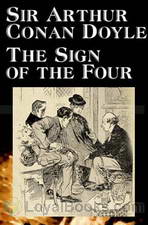 The Sign of the Four
The Sign of the Four
A secret shared by four convicts and two prison guards, a daughter in search of her missing father, a strange gift of a single pearl received every year, a fabulous treasure buried in the ancient Agra Fort in India, an eccentric detective being consulted to solve a deadly puzzle. All these events are set against the turbulent backdrop of the Great Indian Mutiny of 1857 in the second Sherlock Holmes novel by Sir Arthur Conan Doyle, The Sign of the Four. Mary Morstan, a lovely young woman, comes to the Baker Street lodgings shared by Holmes and Dr Watson... | |
 His Last Bow
His Last Bow
The disappearance of a German spy and the gathering storm that foretells the prelude to World War I is what greets you in this riveting book. The further you read the more mysteries unfold like secret submarine plans with some pages missing found in the hands of a corpse. There's also family insanity in Cornwall, a dead Spaniard and mafia hiding in an empty London flat. His Last Bow was published in the Strand Magazine circa 1908 and included several other short stories as well. Even during Sir Arthur Conan Doyle's own lifetime, Holmes had acquired cult status... | |
 The Valley of Fear
The Valley of Fear
Doyle's final novel featuring the beloved sleuth, Sherlock Holmes, brings the detective and his friend to a country manor where they are preceded by either a murder or a suicide. A secretive organization lies culprit and an infiltration of it is in order. | |
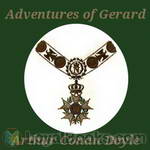 The Adventures of Gerard
The Adventures of Gerard
These lesser known stories were penned by Conan Doyle during the period between killing off Sherlock Holmes in 1893 and reluctantly resurrecting him some ten years later. The swashbuckling, eponymous hero, Etienne Gerard, is one of Napoleon's gallant French Hussars, who considers himself the finest of them all. Through these "Boys Own Adventures", Conan Doyle pokes gentle fun at both the French and the English. This is the second volume containing eight adventures. | |
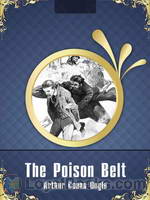 The Poison Belt
The Poison Belt
Three years after the events that took place in The Lost World, Professor Challenger urgently summons his fellow explorers (Professor Summerlee, Lord John Roxton, and reporter E.D. Malone) to a meeting. Oddly, he requires each to bring an oxygen cylinder with him. What he soon informs them is that from astronomical data and just-received telegraphs of strange accidents on the other side of the world, he has deduced that the Earth is starting to move through a region of space containing something poisonous to humankind... | |
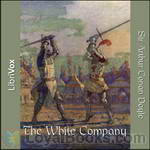 The White Company
The White Company
Set during the Hundred Years’ War with France, The White Company tells the story of a young Saxon man who is learning what it is to be a knight. Raised by Cistercian Monks and rejected by a violent elder brother, Alleyn Edricson takes service with one of the foremost knights in the country. When Alleyn falls in love with the knight’s daughter, he must prove himself to be a courageous and honourable knight before he can win her hand. Alleyn and his friends set forth with the other men-at-arms to join Prince Edward in Bordeaux, from where they will take part in the Prince’s campaign into Spain... | |
 The Tragedy of the Korosko
The Tragedy of the Korosko
| |
 The Great Shadow
The Great Shadow
Set in an English-Scottish border village during the waning days of the Napoleonic era, this adventure story introduces us to Jock Calder, whose quiet way of life is shattered when a mysterious stranger steps ashore near his home. The stranger changes forever the lives of Jock, his cousin Edie, and his best friend Jim, sending the young men into the jaws of the final battle to defeat The Great Shadow that threatens to devour the whole of Europe. Don't look for Sherlock Holmes in this well-written tale, but do expect a wonderful glimpse of life at the end of the Napoleonic era, including an exciting rendition of The Battle of Waterloo. (Introduction by Christine Dufour) | |
 The Mystery of Cloomber
The Mystery of Cloomber
This novel is written by the author of, among other novels, the Stories of Sherlock Holmes. It is narrated by John Fothergill West, who tries to discover why the tenant of Cloomber Hall, General Heatherstone, is nervous to the point of being paranoid. Why are his fears becoming stronger every year at the fifth of October? And why doesn't he let his children leave home? This is a great mystery novel with a sharp twist at the end. | |
 Uncle Bernac: A Memory of the Empire
Uncle Bernac: A Memory of the Empire
Looking for a replacement to Sherlock Holmes after the author had killed him off in 1894, Doyle wrote this murder mystery in the dying years of the 19th century. Set in Napoleon’s era, it involves a Frenchman returning to his native land to join the Emperor’s ranks. | |
 Captain of the Polestar, and other tales
Captain of the Polestar, and other tales
This is a collection of early Sir Arthur Conan Doyle short stories. It includes stories of mystery, comedy, shipwrecks and fantasy. | |
 The Last of the Legions and Other Tales of Long Ago
The Last of the Legions and Other Tales of Long Ago
| |
 Desert Drama: Being the Tragedy Of The Korosko
Desert Drama: Being the Tragedy Of The Korosko
Also published under the title The Tragedy of the Korosko (1898). A group of European tourists are enjoying their trip to Egypt in the year 1895. They are sailing up the River Nile in a "a turtle-bottomed, round-bowed stern-wheeler", the Korosko. They intend to travel to Abousir at the southern frontier of Egypt, after which the Dervish country starts. They are attacked and abducted by a marauding band of Dervish warriors. The novel contains a strong defence of British Imperialism and in particular the Imperial project in North Africa. It also reveals the very great suspicion of Islam felt by many Europeans at the time. | |
 The Man from Archangel and Other Tales of Adventure
The Man from Archangel and Other Tales of Adventure
| |
 Doings of Raffles Haw
Doings of Raffles Haw
The people of the small town of Tamfield are not used to exciting things happening. When millionaire Raffles Haw moves to town, rumors spread like wildfire about him. The advent of Mr. Haw, however, changes the town, and particularly the lives of the McIntyre family, in ways no one could ever have guessed. | |
 Round The Fire Stories
Round The Fire Stories
In the present [1908] collection those [stories] have been brought together which are concerned with the grotesque and with the terrible—such tales as might well be read “round the fire” upon a winter’s night. This would be my ideal atmosphere for such stories, if an author might choose his time and place as an artist does the light and hanging of his picture. However, if they have the good fortune to give pleasure to any one, at any time or place, their author will be very satisfied. Summary by Book Preface | |
By: Sir Charles G. D. Roberts (1860-1943) | |
|---|---|
 Around The Campfire
Around The Campfire
Action and adventure short stories of men and animals in the wild. - Summary by David Wales | |
By: Sir Francis Galton (1822-1911) | |
|---|---|
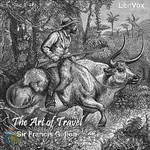 The Art of Travel
The Art of Travel
The Art of Travel is a handbook of practical advice for the adventure seeking Victorian. We hear how to organize all steps of a voyage, from the very beginnings (qualifications of a traveller, how to organize an expedition, the perfect outfit), to the actual trip (how to choose a bivouac, huts and tents, what game to shoot - and how, dealing with (hostile) savages), until the final, hopefully successful, return of the traveller (arranging memoranda). | |
By: Sir Henry Morton Stanley (1841-1904) | |
|---|---|
 How I Found Livingstone
How I Found Livingstone
Sir Henry Morton Stanley is famously quoted for saying “Dr Livingstone, i Presume?”. Born in Wales, he migrated over to the United States at the age of 18, and eventually became an overseas correspondent for the New York Herald. In 1869 Stanley was told by James Gordon Bennett Jr to find Livingstone, a scottish missionary and explorer, who was lost in central Africa. When Stanley commented on the cost Bennett’s reply was: “Well, I will tell you what you will do. Draw a thousand pounds now; and when you have gone through that, draw another thousand, and when that is spent, draw another thousand, and when you have finished that, draw another thousand, and so on; but, FIND LIVINGSTONE. | |
By: Sir Walter Scott (1771-1832) | |
|---|---|
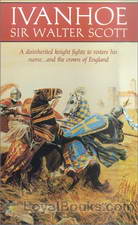 Ivanhoe
Ivanhoe
Medieval England in the 12th century. The evil Prince John rules England in place of his brother, the noble Richard the Lionheart, who is being held in an Austrian prison by Duke Leopold of Austria, while returning from one of his Crusades. Under the avaricious and Machiavellian John, the Norman aristocrats are in constant conflict with the native Saxon people. Ivanhoe by Sir Walter Scott is set in these turbulent times. The eponymous hero, Wilfred of Ivanhoe, the son of a Saxon nobleman has been disinherited by his father for following King Richard into war... | |
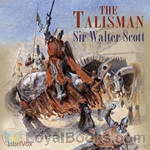 The Talisman
The Talisman
The Talisman is a gripping tale set near the end of the Third Crusade. King Richard the Lionheart is grievously ill, and all around him the leaders from allied countries plot and scheme to gain personal power, putting the future of the crusade in jeopardy. Sir Kenneth of Scotland finds himself caught up in events, and finds both his honour and his life are now on the line. Can a cure be found for the King? Can Kenneth redeem his honour? – Written by Rowen. | |
 Rob Roy
Rob Roy
Rob Roy is a historical novel by Walter Scott. It is narrated by Frank Osbaldistone, the son of an English merchant who travels first to the North of England, and subsequently to the Scottish Highlands to collect a debt stolen from his father. On the way he encounters the larger-than-life title character of Rob Roy MacGregor. Though Rob Roy is not the lead character (in fact the narrative does not move to Scotland until half way through the book) his personality and actions are key to the development of the novel. | |
 Monastery
Monastery
Dame Elspeth is kept in a tower after the death of her husband. The widow of the Baron of Avenel and her daughter seek safety with Elspeth in her tower. Hearing the baroness's deathbed confession, Father Philip notices her Bible. As he carries it to the Lord Abbot, it is taken from him by a White Lady. A sub-prior investigates this story and finds that the Bible is now back in the owner's hands. Later, Elspeth's son sees the White Lady when he snatches the Bible from a flaming altar. Intrigue follows intrigue... | |
By: St. George Henry Rathborne (1854-1938) | |
|---|---|
 Boy Scouts First Camp Fire
Boy Scouts First Camp Fire
The Silver Fox Patrol is out on their first camping trip! The boys, Thad the fill-in scout-master, Allan, Bumpus, Davy Jones, Smithy, Bob White, Giraffe and Step-Hen, are learning many new things about being scouts and about themselves. But when a bear invades the camp, their trip turns into an adventure that they will talk about for a long time! Herbert Carter is one of many pseudonyms used by St George Rathborne. | |
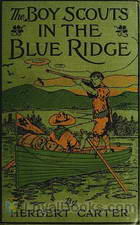 Boy Scouts in the Blue Ridge
Boy Scouts in the Blue Ridge
The Silver Fox Patrol is hiking in the Blue Ridge Mountains of North Carolina, at the invitation of Bob White. They are enjoying their outing in a real wilderness, but trouble comes along from a local Moonshiner. Herbert Carter is one of many pseudonyms used by St George Rathborne. (Ann Boulais) | |